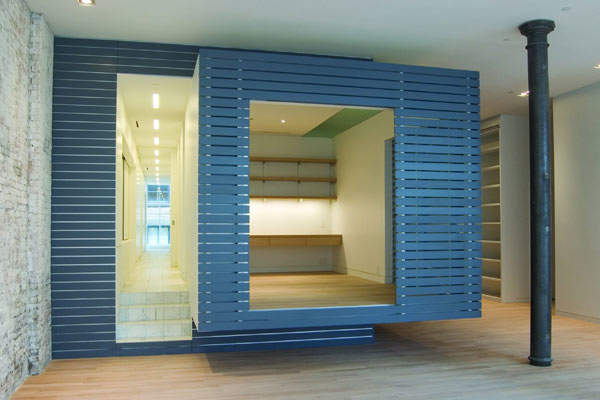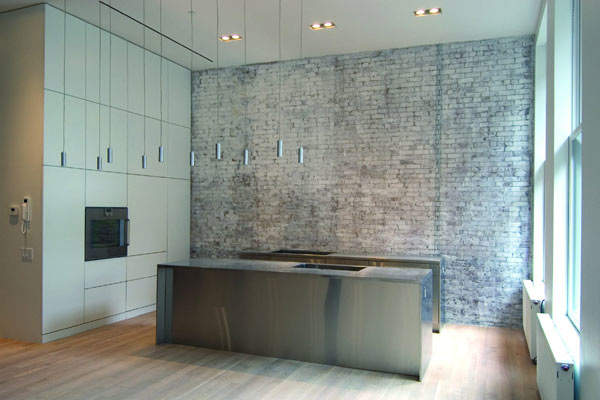Lofts, with their high ceilings and large floor plates, have become the ideal of urban living but the conversion of these spaces to residences often fails to take advantage of their potential. Unlike a warehouse, an apartment requires a number of individual rooms, each with its own privacy requirements. But if the loft is simply divided into smaller rooms, the openness of the original space is lost, so a different architectural approach is needed.
Manhattan Slide Loft
The design for a loft space in downtown Manhattan inserted an object to accommodate the majority of the residential functions. The two secondary bedrooms in the rear of the space are visually connected to the main space through a wood and translucent glass wall. The space outside the object remains a continuous generous and open space.
The inserted object is in fact an object within an object. A section of the box is cantilevered out of the original form in two directions. The void which remains after the shifting becomes the circulation within the box. This shifting also establishes the raised floor level within the object. This elevated floor level allows the creation of a compelling sectional relationship across the box’s porous skin.
The inserted object also provides the loft with mechanical services. The mechanical equipment and ductwork run above the occupied space and the plumbing and return air run in the space below.
By treating the intervention as an insertion rather than division, the openness of the loft was maintained and a compelling dualism between the original space and the intervention was created.





